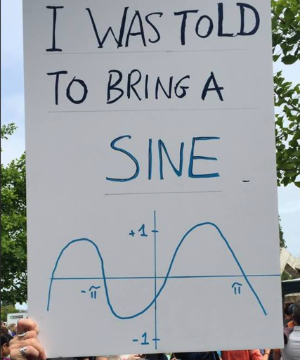Scenario: The Waveform Wizards
Background:
In the mystical academy of Fourier, Waveform Wizards are tasked with mastering the manipulation of waves. Their final test involves using an applet to explore the superposition of waves and express complex waveforms in simpler forms using trigonometric identities.
Objective:
As a senior apprentice, you are challenged to use the applet to combine two waveforms and simplify them into a single wave equation. Your goal is to demonstrate your understanding of wave superposition and trigonometric identities.
Investigation Steps:
1. Combining Waves:
- Use the applet to adjust the parameters a, b, c, d, and f to create two distinct waveforms, and .
- Observe the combined waveform created by .
2. Simplifying the Waveform:
- Apply trigonometric identities to express as a single wave in the form .
- Use the applet's tools to show this graphically and verify the simplification.
3. Analyzing the Simplified Wave:
- Interpret the meaning of the amplitude R and phase shift α in the context of the combined waveform.
- Ensure that the simplified wave accurately represents the superposition of and .
4. Presenting Your Findings:
- Document the process of combining and simplifying the waveforms.
- Prepare to present your simplified waveform and the mathematical steps taken to the masters of the academy.
Questions for Investigation:
1. Discovery Question:
- How do the original wave parameters affect the amplitude and phase shift of the simplified waveform?
2. Experimenting with Parameters:
- What happens when you manipulate the sliders for a, b, c, d, and f in the applet? How does it change the combined waveform?
3. The Role of Phase Shift:
- How does changing the phase shift affect the combined waveform, and why is this important?
4. Reflection:
- Reflect on the importance of wave superposition in fields such as acoustics, electronics, and quantum physics.
Fun Elements:
- Organize a "Waveform Workshop" where wizards experiment with different parameters to create artistic waveform patterns.
- Host a "Trigonometric Triathlon" competition where the fastest and most accurate simplification wins.
Through this mini-investigation, you will not only demonstrate your prowess in wave manipulation but also celebrate the harmonic convergence of mathematics and magic.


